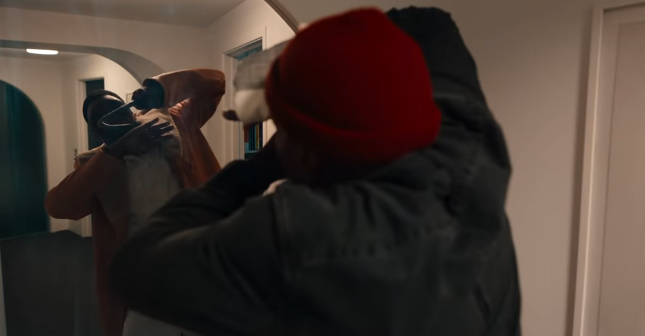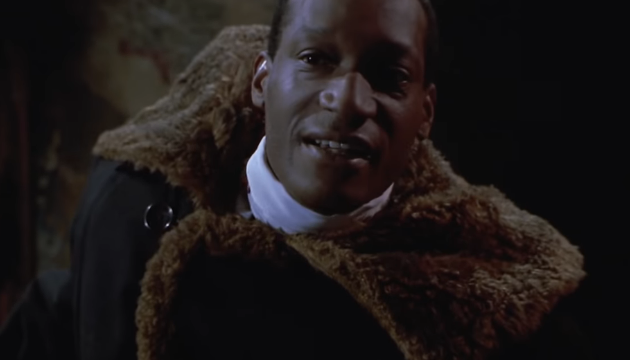Since Black History Month is coming to an end, I thought I would conclude my series of articles by addressing one of the newer anticipated movies, “Candyman,” which released its first trailer on Feb. 27. Its footage circulated on Twitter with excitement and horror.
Plot details of the new Candyman still remain mostly unclear. All that is known is that Anthony, the baby from the original film, is now an adult portrayed by Yahya Abdul-Manteen II whose credits include “Watchmen” and “The Get Down.” It is also set in a gentrified area that formerly occupied the Cabrini-Green housing projects.
The trailer depicts Anthony being drawn to the neighborhood as well as the myth of Candyman, and possibly – he becomes his vessel?

Rather than diving into analysis and speculation, I began thinking of the history of “Candyman” and what it means to have a black director now at the helm.
In France, film directors are known as auteurs. Although screenwriters play crucial parts in the development of a story, they are essentially providing the film with its bones. It is the director, however, that shows the audience what they saw while reading the screenwriter’s work. This is why so many directors are celebrated by the media, such as Steven Speilberg or Quentin Tarantino. Then there is Jordan Peele, one of the latest directors that has his name is in the mouth of many.
Peele began as a comedic actor, starring in “Mad TV” from 2003 to 2008. Later, he would become better known for the Comedy Central sketch series “Key & Peele” which lasted from 2012 to 2015. Two years after the conclusion of “Key & Peele” he was seen in a new light with the release of his directorial debut, “Get Out.”
“Get Out” tells the story of Chris, a black man who is in an interracial relationship with a white woman named Rose. When he agrees to meet her family in rural Upstate New York, he finds out that Rose’s kind family plays a part in committing unspeakable horrors – literally stealing black bodies.
“Get Out” is one of many films that helped shift African American cinema to new levels in the present day. In a genre where black characters were killed first nonetheless.
Its themes were quickly noted, with many viewers pointing out how it touched on liberal ignorance to how missing African Americans hardly receive coverage. Overall, “Get Out” depicted some of the everyday fears in the African American community and then amplified it. The end result was phenomenal, earning 4 nominations at the Golden Globes and receiving, “Best Original Screenplay.”

After this, Peele released “Us” in 2019, yet again featuring black characters in principal roles. When Adelaide and her family are enjoying a simple vacation, things quickly turn foul when they are confronted with their doppelgangers. Yet again, there was social commentary in which the antagonists of the film, called the Tethered, are believed to represent xenophobic paranoia, if not unfortunate people caught in structural class oppression.
It is not a stretch to say that Peele’s success is ultimately what caused the creation of, “Ma,” a film that did not emerge from his imagination but rather, came from Blumhouse Productions. Blumhouse actually produced “Get Out,” and the company wanted its audience to know this, as they placed Peele’s film on the poster.
The premise of “Ma” brought on intrigue, with the idea this film was taking the mammy stereotype and turning it on its head. When it comes to stereotypical imagery of African Americans, a mammy is a rotund woman, joyous and helpful as the character Octavia Spencer was portraying. They were of older age, and possessed a great love for white children, hence their maternal name: this is also something Spencer’s character possessed.
But in the end, Ma received no awards let alone recognition. Often, reviews would acknowledge that it took a good concept, yet did nothing effective. Some pointed out that this was because neither the director or screenwriter weren’t people of color and therefore, the themes found in Peele’s successful, black-driven horror films were greatly absent, which resulted in a weak film.
It cannot be denied that African American directors bring their cultural perspective to the films they create, which brings my interest that Peele – among all directors – is attached to the 2020 “Candyman.”

I can remember the first time I saw the ’90s “Candyman.” I was much too young and as a result, I felt certain that he was real. If he wasn’t? I wasn’t going to find out. Despite my fear, I was taken in by the story.
Its antagonist, the titular Candyman was the son of a slave who ultimately died gruesomely due to a lynch mob. This was the first time I saw a horror film that depicted the harsh realities of slavery, let alone took place in housing projects. However, despite being deemed a superb film to this very day, the original “Candyman” is not without its flaws.
It is said that the director and screenwriter, Bernard Rose, attended a series of NAACP meetings due to the fact the producers were worried about the subject matter.
“What they said to me when they’d read the script was ‘Why are we even having this meeting? You know, this is just good fun.” Rose said in a 1993 interview with The Independent, “Their argument was ‘why shouldn’t a black actor be a ghost? Why shouldn’t a black actor play Freddy Krueger or Hannibal Lector? If you’re saying that they can’t be, it’s really perverse. This is a horror movie…’”
Official statements from the NAACP cannot be found, but black moviegoers did enjoy the film. However, it should be noted that during this time there had been two black filmmakers vocally expressed their disdain.
One was Carl Franklin, director of the film “Devil In A Blue Dress.”
“It unabashedly uses racial stereotypes and destructive myths to create shock,” Franklin said in a 1992 interview with the Chicago Tribune. “I found it hokey and unsettling. It didn’t work for me because I don’t share those fears, buy into those myths.”

The lead actress of “Candyman,” Virginia Madsen is seen in this interview defending the antagonist, yet admitted her concerns with the potential public response. In addition to that, she questioned if the vocal, African American director Spike Lee would enjoy it.
In the present day, “Candyman” possesses unfortunate implications. Imperfect like every nostalgic thing we hold dear.
It should be taken into consideration that Madsen’s character Helen falls under the white savior trope. This upper-class woman investigates the projects of Cabrini-Green, surrounded by African Americans who live their life in a cycle of superstition, weariness and violence. Her intentions are noble and just as she desires to help the impoverished community.
In the YouTube video, “Candyman: Breaking all the Rules of Horror,” coldcrashpictures provided a thorough history and analysis of this film. When it came to addressing the racial elements, he admitted that he could not say what can and cannot offend someone, but he still provided his own take.
“My interpretation of this film is that it’s very much a dramatization of the white fears associated with black poverty and specifically white liberal fears,” he said. “Not the fear that it will spread necessarily, that’s a conservative fear, but the fear it can’t be helped. Even with our best efforts.”
One cannot help but wonder if this is what went through Rose’s head during the creation process, especially since there were no African Americans a part of his team. So, what can be said about the 2020 “Candyman”?
Well, its director is Nia DaCosta, a 29-year-old African American woman. Its screenplay has also been written by herself, Peele and Win Rosenfeld – Rosenfeld’s credits include producing, “BlacKkKlansman.” So it is definite that the racial elements of Candyman will remain as they did in the original, but this time creative African Americans are playing a crucial role in bringing the story to life.
According to Ian Cooper, the creative director of Peele’s studio Monkeypaw Productions, this film works as a standalone and is connected to the ‘90s “Candyman” in a “complicated and interesting way.”
Without heavily drawing on the first film for resources, did this mean that Peele and DaCosta possessed more artistic room to take the story and provide it with nuances and social commentary straight from an African American perspective? With Peele’s films focusing heavily on racial themes, we can assume so. However, we can only find out what will be new about “Candyman” when it is released June 12.
Ayzha Middlebrooks
Associate Editor


